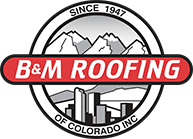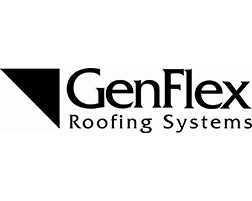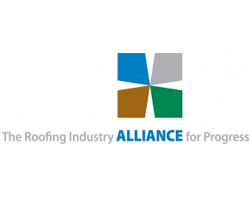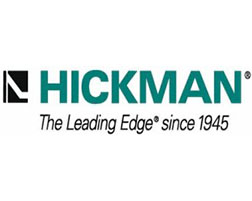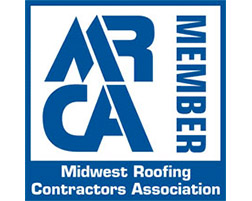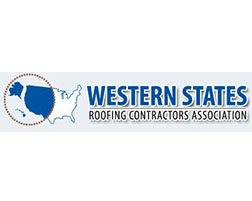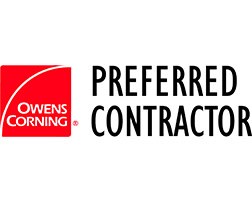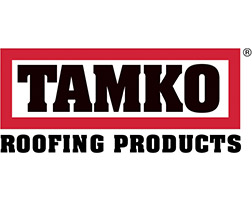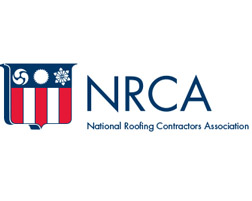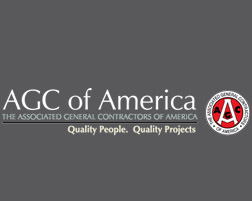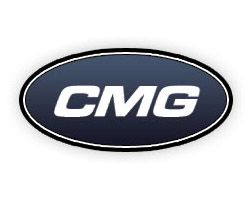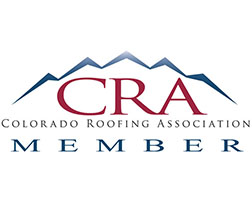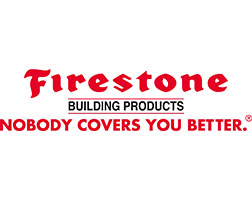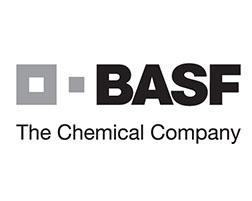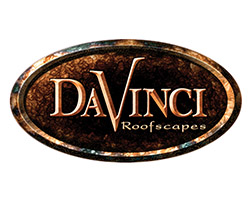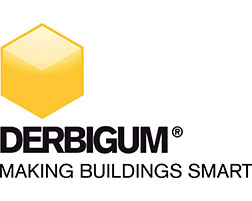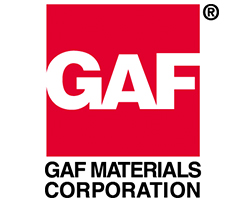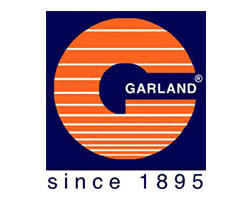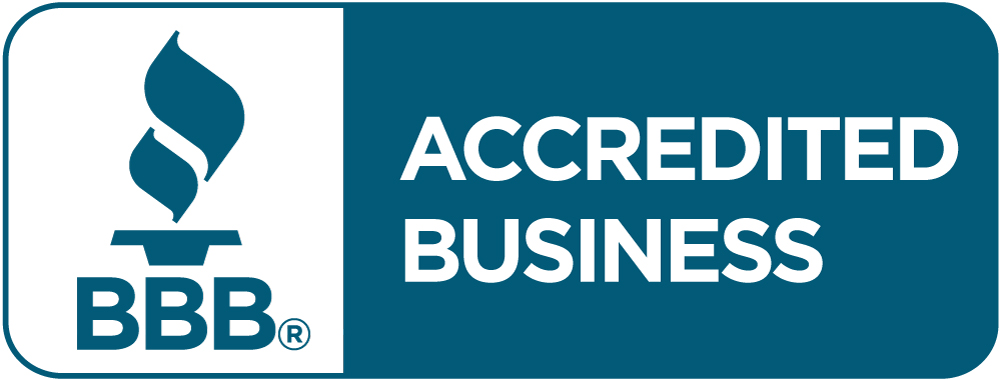Storm Hail Damage: How to Spot It and What to Do Next
Severe hailstorms are a regular occurrence in Colorado, especially along the Front Range. In just a matter of minutes, a storm can leave behind cracked shingles, dented metal, and water infiltration risks. If your home has experienced a recent hailstorm, it’s essential to inspect for storm hail damage as soon as possible.
At B&M Roofing, we specialize in helping homeowners identify, assess, and repair hail damage before it leads to expensive issues. In this guide, we’ll explain what storm hail damage looks like, why it matters, how to inspect your roof, and what steps to take to protect your home.

What Is Storm Hail Damage?
Storm hail damage refers to the physical harm caused by hailstones during a thunderstorm or severe weather event. Hailstones vary in size—some as small as a pea, others as significant as a baseball—and they strike at high speeds, causing visible and hidden damage to roofing systems.
How Hail Affects Different Roof Types
- Asphalt Shingles: Granule loss, bruising, torn or lifted shingles
- Metal Roofs: Dents, punctures, chipped coating
- Tile or Slate: Cracks, shattered pieces, loose tiles
Even small hailstones can compromise the outer layer of your roof, weakening its ability to resist future storms and causing water to seep into the underlying structure.
How to Recognize Roof Damage from Hailstorms
Spotting roof damage from hail isn’t always easy, especially from the ground. However, there are common signs homeowners can look for after a storm:
Asphalt Shingle Damage
- Bald spots where granules have been knocked off
- Soft bruising that feels spongy under pressure
- Cracked or split shingles
- Edges that curl or lift, especially after repeated hail exposure
Metal Roof Indicators
- Circular dents on flat sections and seams
- Scratches or chipped finish from impact
- Loose fasteners or compromised seams
Tile Roof Clues
- Fractures or chips in ceramic or concrete tiles
- Dislodged or missing tiles
- Hairline cracks are not visible without close inspection.

Other Signs of Storm Damage Around Your Home
Roof damage is often part of a larger pattern of destruction caused by a hailstorm. These related issues may indicate your roof also sustained damage:
- Dented gutters and downspouts
- Damaged siding or window trim
- Broken skylights or cracked windows
- Shredded window screens
- Fallen tree branches or debris on the roof
- Water stains or leaks in the attic or ceiling
If you notice any of these signs, a professional roof inspection is strongly recommended.
Why Storm Hail Damage Should Be Addressed Immediately
Delaying repairs after a hailstorm can lead to serious and costly problems. Here are the main risks of ignoring hail damage:
Water Infiltration
When shingles or tiles are compromised, water can seep into the roof deck, insulation, and walls. This leads to interior leaks, rot, and structural deterioration.
Mold and Mildew Growth
Moisture trapped under the roofing material or inside the attic can lead to mold, which poses health risks and may necessitate remediation.
Voided Manufacturer Warranties
Some roofing product warranties are voided if storm damage is not repaired promptly, mainly when leaks occur.
Limited Insurance Claim Windows
Most insurance policies require hail damage to be reported within a specific timeframe. If you wait too long, your claim could be denied.
How to Inspect for Hailstorm Roof Damage
A careful inspection can help determine the severity of the damage and whether professional repair is needed.
Perform a Ground-Level Check
Walk around your property and examine:
- Gutters for dents or separated joints
- Siding and trim for pockmarks or holes
- Outdoor furniture or HVAC units for signs of hail impact
- Driveways or patios for accumulations of roofing granules
Check the Attic and Ceilings
Inside your home, look for:
- Water stains or dark spots on the ceiling
- Dripping or wet insulation
- Signs of daylight through the roof deck
Schedule a Professional Roof Inspection
While DIY checks can be helpful, only a professional can accurately identify hidden or subtle hail damage. B&M Roofing uses industry-standard tools and detailed documentation to provide:
- Comprehensive damage reports
- Photos and measurements for insurance use
- Honest repair vs. replacement recommendations

What to Do After Hail Damages Your Roof
If a hailstorm has hit your home, follow these steps to ensure proper care and insurance coverage:
Document the Damage
Take photos of any visible damage to the roof, gutters, siding, or windows. Note the date and time of the storm.
Contact Your Insurance Company
Let them know you suspect hail damage. They may ask you to schedule a roof inspection or assign an adjuster to inspect your roof.
Get a Professional Inspection
A certified roofing contractor can assess the damage and provide a formal inspection report, which is crucial for filing insurance claims.
File a Timely Claim
Submit your claim with supporting documentation, including inspection findings and cost estimates for repair or replacement.
Begin Repairs Promptly
Schedule repairs to prevent further damage, especially before the next storm. B&M Roofing offers responsive, local emergency service with high-quality artistry.
Storm Hail Damage Repair Options
The proper repair approach depends on the extent of the damage, your roofing material, and your insurance coverage.
Minor Repairs May Include:
- Replacing damaged shingles or tiles
- Resealing flashing around vents and chimneys
- Repairing dents or holes in metal panels
- Patching roof membranes or applying protective coatings
Full Roof Replacement May Be Necessary When:
- Damage is widespread across the entire surface.
- The roof is nearing the end of its service life.
- Underlayment or decking has been compromised.
B&M Roofing provides accurate assessments and will only recommend replacement when it’s in your best interest.
Does Insurance Cover Hailstorm Roof Damage?
In most cases, yes. Homeowners insurance typically covers storm-related roof damage, including damage caused by hail. However, the level of coverage depends on the terms of your policy.
Key Considerations:
- Replacement Cost Value (RCV) vs. Actual Cash Value (ACV)
- Deductible amount and exclusions
- Roof age and maintenance history
- Proper documentation of the storm and damage
Our team works closely with homeowners and insurance providers to streamline the claims process and maximize coverage.

Why Choose B&M Roofing for Hail Damage Repairs
With decades of experience serving Colorado communities, B&M Roofing is a trusted leader in storm restoration services.
We offer:
- Free hail damage inspections
- Fast emergency response
- Detailed insurance documentation
- High-quality repairs using top-tier materials
- Local expertise and personalized service
Schedule Your Storm Damage Inspection Today
If your property was recently hit by hail, don’t wait to find out whether your roof was affected. The sooner you act, the better you can protect your home from long-term issues.
Contact B&M Roofing today for a free, no-obligation inspection and a clear plan to restore your roof to top condition.
Local Emergency Roofer: Why B&M Roofing Is the Roofer You Can Trust
When a roofing emergency strikes, time is everything. Whether it’s a sudden leak during a Colorado thunderstorm or severe hail damage in the middle of the night, knowing who to call can make the difference between a quick fix and long-term property damage. At B&M Roofing, we’re proud to be the local emergency roofer that homeowners and businesses across Colorado trust when disaster hits.
With decades of experience in residential and commercial roofing, our expert team responds fast, works efficiently, and delivers repairs you can count on, day or night.
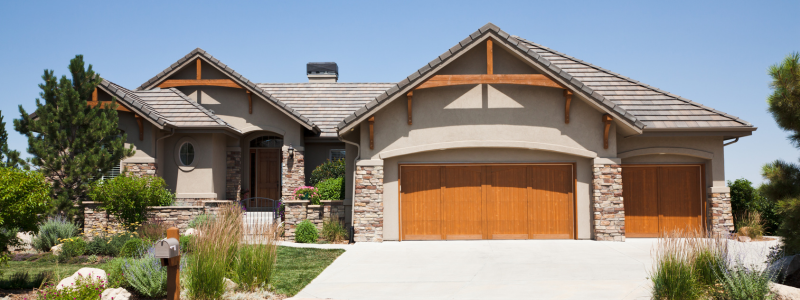
Why You Need a Local Emergency Roofer, You Can Trust
Roofing emergencies are unpredictable. Strong winds, falling trees, heavy snow, or even poorly installed roofing systems can lead to major structural issues without warning. And when the weather turns, or water gets inside, every minute counts.
Here’s why relying on a local emergency roofer like B&M Roofing matters:
- We Know Colorado Weather: From Front Range windstorms to mountain blizzards, we’ve seen it all, and we prepare for it.
- We’re Part of Your Community: As a locally owned and operated business, our team lives and works where you do. That means faster response times and a genuine commitment to doing the job right.
- We’ve Seen Every Type of Emergency: Whether it’s asphalt shingles, flat roofing systems, or metal roofs, our experience spans decades and every roofing material.
What to Expect from B&M Roofing’s Emergency Services
When you contact B&M Roofing for an emergency repair, you’re not just getting a quick patch job. You’re getting a comprehensive service built on professionalism, safety, and quality.
Here’s what happens when you call us:
Immediate Response
Our team is available 24/7 to take your call. We’ll dispatch a crew to your property as soon as possible, usually within hours.
Temporary Protection
We begin by assessing the damage and installing temporary protective measures, such as tarps, to stop further interior damage from rain or snow.
Damage Assessment
Our licensed professionals conduct a full inspection to determine the root cause and extent of the damage. We’ll walk you through your options and discuss the next steps.
Permanent Repairs
Once the weather allows or your insurance claim is approved, we’ll complete long-lasting repairs using high-quality materials tailored to your specific roof type.
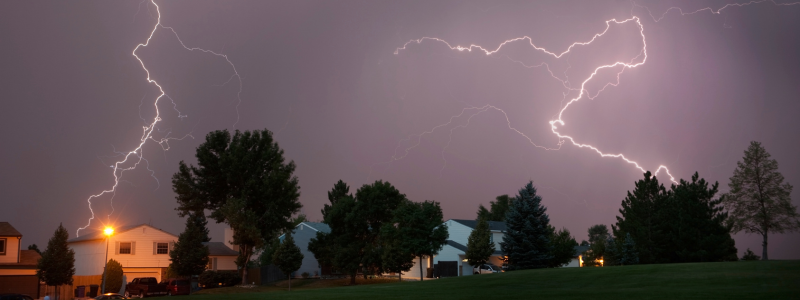
Signs You May Need Emergency Roofing Services
Not all roofing problems are immediately obvious, but these warning signs should never be ignored:
- Visible leaks or water stains inside your home or building
- Missing, torn, or curling shingles after a windstorm
- Sagging rooflines or soft spots when walking on the roof
- Granules collecting in gutters, indicating aging or damage
- A sudden increase in energy bills, which may point to insulation issues caused by roof failure
If you notice any of these issues, contact a local emergency roofer right away before the damage spreads.
Why Local Roofing Matters in an Emergency
You could hire a national chain or wait days for someone from out of town to show up. But when your property is on the line, working with a local emergency roofer makes all the difference.
Fast Response Times
Being headquartered in Colorado means our crews can be on-site quickly, regardless of your location, from Denver and Boulder to Vail and the Western Slope.
Knowledge of Local Codes
We’re up to date on all state and municipal roofing codes. That means your emergency repair won’t just be fast; it will also be thorough. It will be compliant with the latest safety standards and built to withstand the test of time.
Community Accountability
We’ve built our reputation through decades of local service. When you work with B&M Roofing, you’re working with a company that stands behind its work because we’re your neighbors.
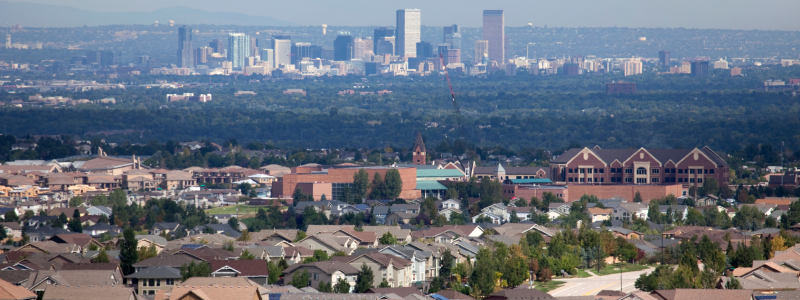
What Sets B&M Roofing Apart?
When it comes to roofing, experience, professionalism, and safety aren’t negotiable. At B&M Roofing, we bring all three plus something more:
- Founded in 1947, we’ve served Colorado for over 75 years.
- Licensed, bonded, and insured, so your property is fully protected
- Certified crews trained in OSHA safety and manufacturer-specific installation techniques
- Trusted by institutions like churches, schools, municipalities, and Fortune 500 companies
- A+ Rating from the Better Business Bureau, backed by decades of customer satisfaction
When you need a local emergency roofer, don’t gamble with an unknown provider. Choose the team that Colorado has trusted for generations.
Preparing for a Roofing Emergency
While emergencies are often unexpected, there are steps you can take to reduce long-term damage:
- Know Your Roofing Materials: Different materials have different failure points. For example, flat roofs may be prone to pooling, while metal roofs can suffer seam separation.
- Keep an Eye on the Weather: Storm warnings, wind advisories, and heavy snow forecasts can help you prepare in advance.
- Schedule Regular Inspections: Annual roof inspections from B&M Roofing can detect minor issues before they become costly emergencies.
Prevent Future Emergencies with a Maintenance Plan
The best emergency is the one you never have to face. That’s why we offer proactive roof maintenance plans for both residential and commercial clients.
Our expert roofing services include:
- Biannual inspections
- Gutter cleaning and debris removal
- Flashing and sealant checks
- Photographic documentation and reporting
- Early warning alerts for problem areas
With scheduled maintenance, you’ll not only reduce the risk of unexpected issues, but you’ll extend the lifespan of your entire roofing system.
Learn more about our roof maintenance services.
Insurance Support During Emergencies
Roof damage can be stressful, but navigating insurance claims shouldn’t be. Our team can help you document the issue, provide repair estimates, and work directly with your adjuster to streamline the process. We’ll ensure you have everything you need to get reimbursed for emergency roof repairs.
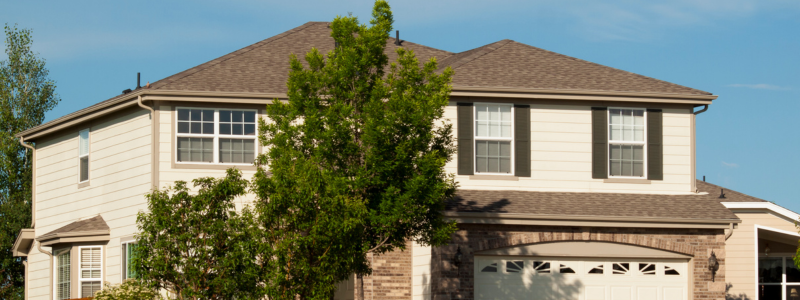
Call B&M Roofing: Your Local Emergency Roofer in Colorado
When your roof fails, it’s essential to act quickly. Don’t waste time searching for a contractor; instead, call B&M Roofing, the trustworthy local emergency roofer known for its rapid response, reliable repairs, and unmatched experience. For immediate assistance, please call us now at (303) 443-5843 or contact us online to request emergency service.
How to Get Insurance to Cover Roof Replacement
At B&M Roofing, we understand that a roof replacement is a significant investment for homeowners. Fortunately, many insurance policies can help alleviate some of the financial burden. However, navigating the claims process can be challenging, and it’s essential to fully comprehend your policy to ensure you receive the coverage you deserve.
In this guide, we will walk you through the steps to obtain insurance coverage for your roof replacement, outline the types of damage typically covered, and share expert tips to enhance your chances of getting your claim approved. We’re here to ensure you feel confident and informed throughout the roof replacement process.

Understanding Your Homeowners Insurance Policy
Before filing an insurance claim for roof damage, it’s essential to understand what your policy covers. Homeowners insurance typically covers roof replacements caused by sudden and unexpected damage. However, not all policies are the same, and exclusions can apply.
Types of Coverage: Actual Cash Value vs. Replacement Cost Value
Insurance policies generally fall into one of two categories:
- Actual Cash Value (ACV): Covers the depreciated value of your roof at the time of damage, meaning you may only receive partial reimbursement for replacement costs.
- Replacement Cost Value (RCV): Covers the full cost of replacing the roof, minus the deductible, without factoring in depreciation.
It’s essential to check your policy documents or contact your insurance provider to confirm your coverage type.
Standard Exclusions in Roof Insurance Policies
Insurance companies often exclude certain types of roof damage from coverage, including:
- Wear and tear or age-related deterioration
- Neglect or lack of maintenance
- Pre-existing damage before obtaining the policy
- Damage caused by improper installation or faulty materials
Understanding these exclusions can help determine whether filing a claim is viable.
What Types of Roof Damage Are Covered by Insurance?
Not all roof damage qualifies for insurance reimbursement. Most insurance providers cover damage caused by the following:
Storm Damage
Strong winds, hail, heavy rain, and severe weather conditions can damage shingles, flashing, and other roofing components. Your claim will likely be approved if your roof has suffered storm-related destruction.
Falling Debris
Tree branches, airborne debris, or other objects hitting the roof during storms can cause significant damage, which is often covered by insurance.
Fire and Natural Disasters
Insurance policies typically cover the cost of replacing the roof if your home experiences a fire, whether from natural causes like lightning or accidental incidents.
Sudden Accidents
Unexpected incidents, such as a neighbor’s tree falling onto your roof or structural failure due to an unforeseen event, may qualify for coverage.

Steps to Get Insurance to Cover Roof Replacement
If you notice damage to your roof, here are some key steps to take in order to get insurance to cover your roof replacement.
Assess the Damage
After a storm or incident, visually inspect your roof for signs of damage. Look for missing, cracked, or curled shingles, hail dents, water stains on ceilings, or any noticeable sagging. Even minor issues can escalate into major problems if left unaddressed.
Document Everything
Thorough documentation is crucial for a successful claim. Take clear, time-stamped photos and videos of the damage from multiple angles. Keep records of previous roof repairs and maintenance, proving the damage was not due to neglect.
Contact Your Insurance Provider
Notify your insurance company as soon as possible. Be prepared to provide:
- The date and cause of the damage
- A detailed description of the affected areas
- Photos and documentation of the damage
- Any repair estimates from professional contractors
Your insurer will likely schedule an adjuster to assess the situation.
Get a Professional Roof Inspection
While insurance adjusters will conduct their inspection, hiring a licensed roofing contractor can provide an independent, professional evaluation. Roofing experts, like us, can:
- Assess the full extent of damage
- Provide a detailed inspection report
- Advocate for you during the claims process by ensuring the adjuster does not overlook damage
Having an expert on your side can significantly increase the likelihood of claim approval.
File Your Claim
Once you have all the necessary documentation, submit your claim through your insurance provider’s process. Some companies allow online submissions, while others require a call or in-person meeting. Be sure to:
- Follow up on your claim status regularly
- Request a copy of the adjuster’s report
- Review your insurance provider’s response carefully
Negotiate If Needed
Insurance companies may deny or underpay claims for various reasons, such as disputed damage assessments or policy exclusions. If this happens:
- Request a reassessment if you disagree with the adjuster’s findings
- Provide additional documentation from a licensed roofing contractor
- Appeal the decision if necessary and consider hiring a public adjuster for further assistance
Hire a Reputable Roofing Contractor
Once your claim is approved, you must choose a trusted roofing contractor to handle the replacement. When selecting a company:
- Look for a licensed and insured roofing specialist
- Ensure they have experience handling insurance claims
- Request a detailed contract outlining costs, materials, and timelines
B&M Roofing has extensive experience working with insurance companies, making the roof replacement process smooth and stress-free.

Common Reasons Insurance Claims Are Denied
Even when you follow the correct steps, claims can be denied due to:
- Pre-existing damage or normal wear and tear
- Failure to report damage promptly
- Insufficient documentation
- Policy exclusions or deductible limitations
To avoid claim denials, always keep maintenance records, report damage promptly, and consult a roofing professional before submitting your claim.
How to Improve Your Chances of a Successful Roof Insurance Claim
While insurance claims can sometimes be unpredictable, you can improve your chances of approval by taking proactive steps:
Schedule Regular Roof Inspections
Routine inspections help identify potential issues before they escalate. A well-maintained roof is less likely to have claims denied due to neglect.
Keep Detailed Maintenance Records
Save invoices, receipts, and inspection reports. These documents prove that your roof was in good condition before the damage occurred.
Work with an Experienced Roofing Contractor
A reputable roofing company like B&M Roofing can provide the necessary documentation and advocacy to help you secure insurance approval.

Get Expert Help for Your Roof Replacement Claim
At B&M Roofing, we understand that filing an insurance claim for roof replacement can feel overwhelming. However, we’re here to help simplify the process. By ensuring you understand your policy, documenting any damage accurately, and collaborating with our experienced team, we can enhance your chances of getting your claim approved.
Don’t wait for the issue to escalate if your roof has suffered damage from a storm, falling debris, or any other unforeseen circumstances.
Need assistance with your roof insurance claim? Contact us today for a professional inspection and expert guidance on handling the insurance claims process.
How Do I Know If My Roof Has Hail Damage?
Hailstorms can cause significant damage to your roof, but spotting the signs isn’t always easy. Even small hailstones can weaken shingles, compromise your home’s structural integrity, and lead to costly repairs if left unchecked. If you’re wondering, “How do I know if my roof has hail damage?” this guide will walk you through the key signs to look for, how to inspect your roof safely, and when to call a professional for an assessment.
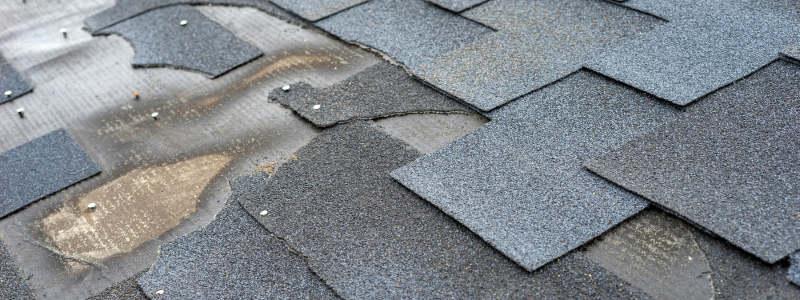
Signs of Hail Damage on Your Roof
Hail damage can vary based on the storm’s severity, the size of the hail, and your roofing materials. Below are the most common indicators that your roof has been impacted by hail:
Visible Exterior Damage
Hail can inflict significant damage to roofing shingles, leading to various issues that compromise the integrity of your roof. Dented or cracked shingles often result from hail, creating small impact craters and fractures that can break sections of the material. If you observe an unusual amount of granules collecting in your gutters or downspouts, this could indicate granule loss on asphalt shingles, signaling that your roofing may be weakened and less effective at protecting your home.
The combination of missing granules and cracked shingles can also expose the underlying protective underlayment, making your roof vulnerable to potential leaks and further water damage. It’s crucial to regularly inspect your roof for these signs of wear to ensure its continued durability and safeguard your home from the elements.
Damage to Metal Roof Components
- Dents in Gutters, Downspouts, and Flashing: If you see visible dents in these areas, your shingles may also be damaged.
- Deformations on Metal Panels: Metal roofing can suffer dents and warping from heavy hail impacts, affecting its durability and lifespan.
Water Leaks & Interior Signs of Damage
- Water Stains on Ceilings and Walls: Discoloration or stains inside your home can signal a leaky roof.
- Mold Growth Due to Hidden Leaks: Hail damage can create tiny cracks that allow moisture to seep in, leading to mold and mildew.
- Peeling Paint or Bubbling Drywall: Moisture intrusion from hail damage may cause paint to peel or drywall to bulge.
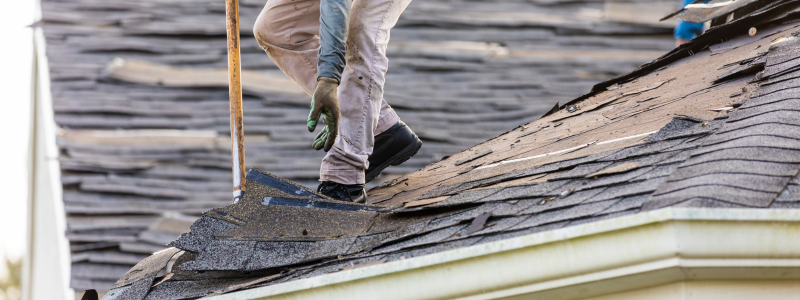
How to Inspect Your Roof for Hail Damage
If your area recently experienced a hailstorm, inspecting your roof for damage is crucial. Here’s how you can do it safely:
Safety Precautions Before Inspecting
When inspecting your roof, it’s wise to start from the ground using binoculars. This allows you to examine the condition without the risks associated with climbing up. If you notice any damage, avoid walking on unstable shingles, which can lead to accidents. Always prioritize your safety during such inspections.
Using a Professional Roof Inspection
While a visual inspection can reveal some damage, a professional assessment can uncover hidden issues:
- Infrared Scans & Moisture Detection: Experts use advanced tools to find leaks and weak spots.
- Structural Integrity Analysis: A professional inspection ensures your roof remains stable and secure.
- Comprehensive Damage Reports for Insurance Claims: Roofing experts provide detailed reports that help with insurance claims.
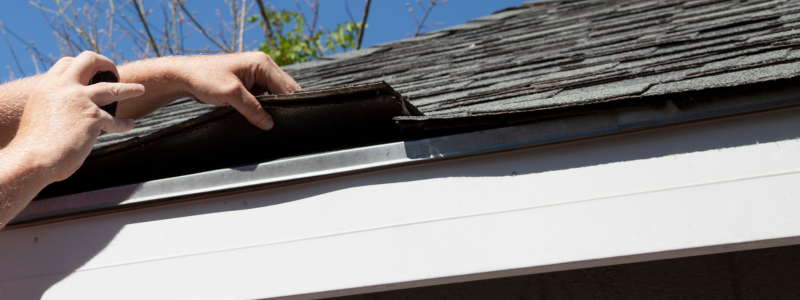
What to Do If You Find Hail Damage
If you discover hail damage on your roof, acting promptly to prevent further issues is crucial. Start by assessing the severity of the damage: minor dents may not require immediate attention, but missing shingles or leaks should be addressed immediately. Document the damage with clear photos, then schedule an inspection with a roofing professional for a comprehensive assessment. If repairs are needed, don’t forget to file a homeowners insurance claim as soon as possible, as many insurers have time limits for hail damage claims. Taking these steps will help ensure your roof is restored effectively and efficiently.
Assessing the Severity of the Damage
Not its hail damage requires immediate repairs, but it’s essential to determine the severity:
- Minor Damage: Small dents or slight granule loss may not need urgent attention.
- Severe Damage: Missing shingles, leaks, or structural issues require immediate repairs.
For severe damage and leaks, request a repair estimate from us!
Filing a Homeowners Insurance Claim
If hail has damaged your roof, follow these steps to streamline your indolence claim:
- Document the Damage: Take clear and detailed photos of all affected areas. Capture images from different angles to showcase the extent of the damage. Ensure you also photograph nearby objects that may help illustrate the impact, such as damaged vegetation or nearby structures. Additionally, consider taking notes on what you see, including the hailstones’ size, as this information may be valuable for your insurance claim.
- Schedule an Inspection with B&M Roofing: Contact B&M Roofing to arrange a professional inspection of your property. Our team of experts will assess the damage and thoroughly evaluate your roof and any other impacted areas. We will document all findings with comprehensive reports and detailed photographs, which will be essential for your insurance claim. Our experience dealing with insurance companies will ensure you receive the necessary documentation to support your case.
- File Your Claim Promptly: After documenting the damage and scheduling an inspection, filing your insurance claim as soon as possible is crucial. Most insurance companies set a time limit for filing claims related to hail damage, so acting quickly is vital to securing your coverage. Review your policy to understand the specific timelines and requirements. Gather all necessary documentation, including the assessment from B&M Roofing, to streamline the claims process and improve the chance of a successful resolution.
Why Choose B&M Roofing for Hailit’sage Repair?
B&M Roofing has been a trusted name in roofing services for over 75 years. Here’s why homeowners choose us for hail damage repair:
- Licensed & Insured Roofing Specialists: Our team meets all industry standards for safety and quality.
- Expert Hail Damage Assessments: We provide professional inspections to detect minor damage.
- Seamless Insurance Assistance: We work directly with insurance companies to make your claims process stress-free.
- Durable Repairs & Quality Craftsmanship: Our repairs are designed to extend the life of your roof and enhance its protection.
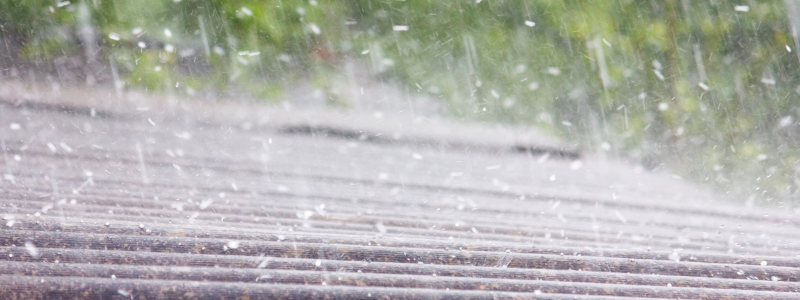
Schedule Your Roof Inspection Today!
At B&M Roofing, we understand that hail damage can lead to significant problems if not addressed promptly. If you suspect your roof has been impacted, don’t wait for minor issues to escalate into expensive repairs. Our experienced team is ready to thoroughly inspect your roof and offer expert recommendations to protect your home.
Contact us today or request a free inspection online, we’re here to help!
Longest Lasting Roofing Shingles
At B&M Roofing, we understand that durability is crucial when selecting roofing materials. Our impact-resistant shingles deliver exceptional protection against severe weather conditions, ensuring your home remains safe and secure. Our long-lasting roof shingles are designed to provide homeowners with decades of reliability and peace of mind.
In this guide, we’ll explore the unique features of impact-resistant shingles, highlight their advantages, and share our top recommendations for roofing materials with the most extended lifespan. You can trust B&M Roofing to help you make informed choices for your roofing needs.
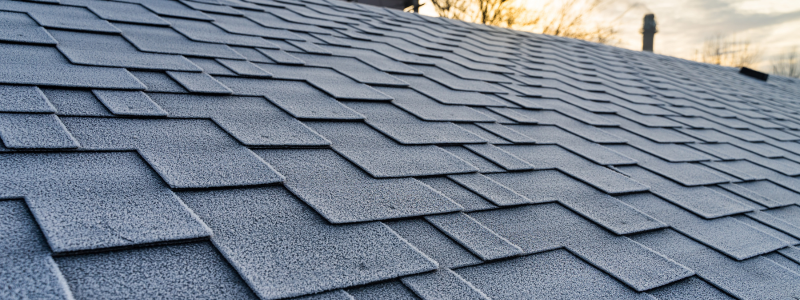
What Are Impact Resistant Shingles?
Impact-resistant shingles are designed to withstand hail, debris, and strong winds better than traditional asphalt shingles. They are engineered with advanced materials that help prevent cracking and breaking upon impact, helping them be some of the longest-lasting roofing shingles.
How Are They Different from Standard Shingles?
The primary difference between impact-resistant and standard shingles is their composition and durability. Traditional shingles often crack or lose granules when hail strikes, whereas impact-resistant shingles flex and absorb the impact, reducing damage.
How Are Impact Resistant Shingles Rated?
Impact-resistant shingles are tested using the UL 2218 Class Rating System, which determines their ability to resist damage from hail and other debris.
- Class 1 & 2: Basic resistance to minor impacts.
- Class 3: Improved durability against medium-sized hail.
- Class 4: Highest impact resistance, capable of withstanding hailstones up to 2 inches in diameter.
In Colorado, we recommend either Class 3 or Class 4 shingles, due to the increased frequency of hail. These impact-resistant shingles are some of the longest lasting roofing shingles you can buy for your home.
Benefits of Impact-Resistant Shingles
When it comes to safeguarding your home from the unpredictable forces of nature, choosing the right roofing material can make all the difference. Impact-resistant roofing offers superior protection against hail and storms by significantly reducing the risk of leaks and minimizing the potential for costly repairs. These specialized shingles have been engineered for enhanced durability, often outlasting standard asphalt shingles, contributing to a longer lifespan for your roof. In addition to the immediate benefits of increased resilience, many homeowners may also enjoy potential insurance discounts, as numerous insurers recognize the value of impact-resistant roofing and offer lower premiums.
Investing in a stronger, more durable roof provides peace of mind and enhances the overall value of your property, making it a smart choice for those looking to increase their home’s resale value in the future. Our expert roofing services can ensure your roof’s safety throughout the years!
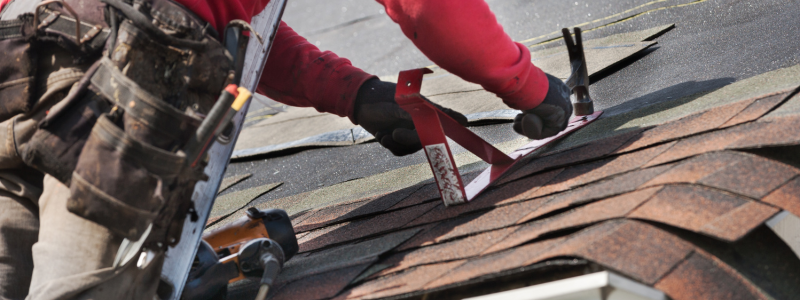
Longest Lasting Roof Shingles: Which Ones Offer the Best Durability?
If investing in a new roof, you want materials that will last for decades. Here’s how the most common roofing shingles compare in lifespan and durability.
Asphalt Shingles (Lifespan: 20-50 years)
The most common and affordable option for roofing materials is often asphalt shingles. These shingles are favored for their cost-effectiveness and ease of installation, making them popular among homeowners. They are also available in impact-resistant varieties, providing extra durability against harsh weather conditions, such as hail or falling debris. However, it’s essential to know that asphalt shingles can be prone to granule loss and wear over time, which may affect their performance and appearance. Regular maintenance and inspections can mitigate these issues and extend the roof’s lifespan.
Metal Roofing Shingles (Lifespan: 40-70 years)
Products that are extraordinarily durable and impact-resistant offer a remarkable level of protection against various environmental factors. They are specifically designed to withstand fire, wind, and UV exposure, making them an ideal choice for those needing reliable performance and longevity. While these products may have a higher initial cost, their benefits far outweigh the investment, as they typically require lower long-term maintenance, ultimately leading to savings over time. By choosing materials that prioritize durability and resilience, individuals and businesses can ensure that their investments stand the test of time, providing peace of mind for years to come.
Slate & Tile Shingles (Lifespan: 50-100 years)
Natural stone and clay materials are renowned for their durability and longevity, often lasting for generations without significant degradation. Their impressive resistance to weather elements and fire makes them an ideal choice for construction in various climates, providing homeowners with peace of mind about the safety and stability of their structures. However, it is essential to note that the heavy weight of these materials necessitates a robust roof structure to support them effectively. This requirement highlights the need for careful planning and consideration during the design phase to ensure that the building can accommodate the substantial load while maintaining structural integrity and aesthetic appeal.
Factors That Affect the Longevity of Roof Shingles
Even the best roofing shingles need proper care to reach their entire lifespan. Here are the key factors that impact their durability:
Installation Quality
Proper installation is essential for long-lasting roofing shingle performance. Poorly installed shingles are more likely to curl, crack, or leak. B&M Roofing ensures that every shingle is installed with precision and expertise.
Regular Maintenance & Inspections
Routine roof inspections help catch minor issues before they become expensive repairs. Homeowners should:
- Clear gutters and downspouts to prevent water buildup.
- Check for loose or missing shingles after storms.
- Schedule a professional inspection at least once a year.
Weather & Environmental Exposure
Roofs in hail-prone areas (like Colorado) benefit from impact-resistant shingles to prevent damage. In hot climates, UV-resistant shingles help reduce sun damage and extend roof life.
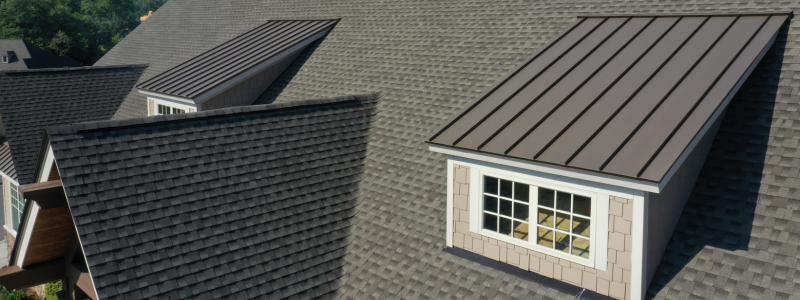
Choosing the Best Impact-Resistant & Long-Lasting Shingles for Your Home
When selecting shingles for durability and weather resistance, consider these factors:
Top-Rated Impact Resistant Shingle Brands
- Owens Corning Duration Storm: Class 4 impact-resistant asphalt shingles.
- GAF Timberline ArmorShield II: Reinforced asphalt shingles for storm protection.
- CertainTeed Landmark IR: High-quality, impact-resistant composite shingles.
- Malarkey Legacy: Rubberized asphalt shingles for extreme durability.
Cost vs. Durability: Is It Worth the Investment?
Impact-resistant shingles generally come with a 10-20% price increase compared to standard shingles; however, they provide several valuable benefits. These shingles lead to fewer repairs over time, resulting in more significant long-term savings. Additionally, homeowners may enjoy lower insurance premiums due to the enhanced durability and protection these shingles offer, ultimately contributing to a longer-lasting roof.
How B&M Roofing Can Help
At B&M Roofing, we install high-quality, impact-resistant, and long-lasting shingles across the state of Colorado. Our experienced team can help you choose the best roofing materials for your home and budget!
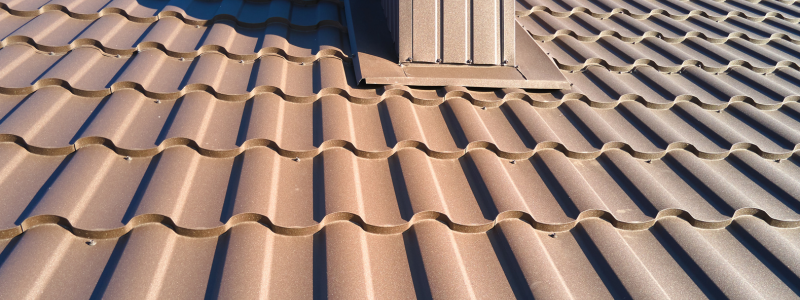
Get Expert Roofing Solutions from B&M Roofing!
Enhancing your home with impact-resistant or durable shingles can protect you for years. Whether you’re considering hail-resistant asphalt shingles or robust metal roofing, B&M Roofing has the specialized knowledge to assist you.
Contact us today for a complimentary roof inspection and estimate!
When Should You Replace a Roof?
Your roof protects your property from the elements while maintaining structural integrity and energy efficiency. But like any part of your home or business, it won’t last forever. Knowing when you should replace a roof is essential to avoid costly repairs and ensure the safety of your property.
At B&M Roofing, we understand that roof replacement is a significant investment. That’s why we’re here to guide you through the process, offering expert inspections, high-quality materials, and professional installation to give you peace of mind.

Why Roof Replacement Matters
A well-maintained roof is your first line of defense against the elements. Over time, even the best roofing materials will show signs of wear, leaving your property vulnerable to water damage, energy inefficiency, and structural issues.
Delaying a necessary roof replacement can result in:
- Expensive Repairs: Ignored issues can escalate, causing extensive damage.
- Decreased Property Value: A deteriorating roof can affect the resale value of your home or business.
- Safety Concerns: Compromised roofs may pose risks to occupants, especially during severe weather.
At B&M Roofing, we emphasize proactive maintenance and timely roof replacement to save you time, money, and stress.
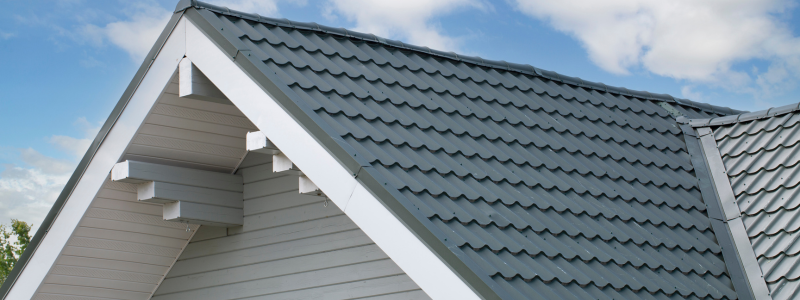
Key Signs That Indicate You Should Replace Your Roof
Here are the most common indicators that it might be time for a new roof:
Age of the Roof
When considering the longevity of different roofing materials, asphalt shingles typically last around 20 to 25 years, while metal roofs can endure for approximately 40 to 70 years. Tile roofs are known for their remarkable durability, often exceeding 50 years. If your roof is approaching the end of its expected lifespan, it’s essential to start planning for a replacement to ensure your home’s continued protection and integrity.
Visible Damage
Homes can exhibit several warning signs that indicate potential roofing issues. Cracked, curling, or missing shingles are common problems that should not be overlooked, as they can compromise the roof’s integrity. Additionally, damaged flashing around vents, chimneys, or skylights can lead to leaks and further damage if not addressed promptly. It’s also important to watch for sagging rooflines, which could suggest underlying structural issues requiring immediate attention.
Leaks and Water Damage
Water leaks can pose serious threats to your home, leading to substantial damage and costly repairs if not addressed promptly. One of the first signs of a potential leak is discoloration on walls or ceilings, which can appear as water stains, mold growth, or even peeling paint. These indicators often suggest water has infiltrated the structure, compromising aesthetics and safety. Inspecting areas prone to leaks is crucial. Pay particular attention to places like the roof’s valleys, flashings, and around vents where materials may deteriorate over time.
High Energy Bills
Being attentive to roofing issues is crucial for maintaining the structural integrity of your home and can significantly affect your energy bills. Poorly maintained roofs with cracked, curling, or missing shingles can lead to inadequate insulation and ventilation. This means that conditioned air—whether heated or cooled—can escape more easily, forcing your HVAC system to work harder to maintain a comfortable temperature. Damaged flashing around vents, chimneys, and skylights can also allow air leaks, increasing energy costs. When your roof is compromised, your home may become less energy-efficient, leading to higher heating and cooling expenses each month.
Storm Damage
Storm damage can significantly impact the integrity and longevity of your roof. High winds, heavy rain, hail, and even snow can create vulnerabilities, exposing your home to further risks. After a storm, it’s essential to inspect your roof for visible signs of damage thoroughly. Look for missing or damaged shingles, fallen debris, bent flashing, or leaks in the attic or ceilings. Hail can cause dents and punctures, particularly on asphalt shingles and metal roofs, while strong winds can lift shingles, leaving them exposed. Water can seep through cracks or gaps, leading to mold growth, wood rot, and structural issues. If you suspect storm damage, addressing roof damage promptly is crucial to prevent more extensive problems.
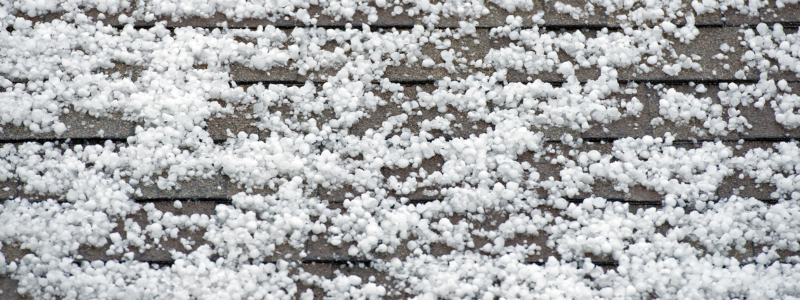
Factors to Consider When Deciding to Replace a Roof
Sometimes, the decision to replace your roof isn’t straightforward. Here are a few considerations to help decide whether or not replacing your roof is right for you:
- Material Type and Lifespan: Different materials have varying durability. B&M Roofing helps you choose the best option for your budget and needs.
- Cost of Repairs vs. Replacement: If repair costs approach or exceed 50% of a replacement, replacing the roof is usually more cost-effective.
- Local Climate: Harsh weather conditions in your area can accelerate roof wear and tear.
- Future Plans: If you’re renovating or planning to sell, a new roof can enhance aesthetics and resale value.
How B&M Roofing Can Help with Your Roof Replacement
At B&M Roofing, we aim to make the roof replacement decision as straightforward as possible. Our knowledgeable team conducts comprehensive inspections to assess your roof’s condition and evaluate all relevant factors. We will help you determine the best materials for your specific needs and location, providing estimates that compare repair costs to the benefits of a full roof replacement. Our commitment is to support you through every stage of the process, ensuring you make an informed decision that enhances the safety and value of your home.
Steps to Take Before Replacing Your Roof
- Schedule a Roof Inspection: Start with a professional assessment from B&M Roofing to understand the condition of your roof.
- Budget for the Project: Plan for costs and explore financing options if needed. We’ll help you get the best value for your investment.
- Choose a Trusted Contractor: Selecting the right contractor is key. With B&M Roofing’s reputation for excellence and customer satisfaction, you’re in expert hands.
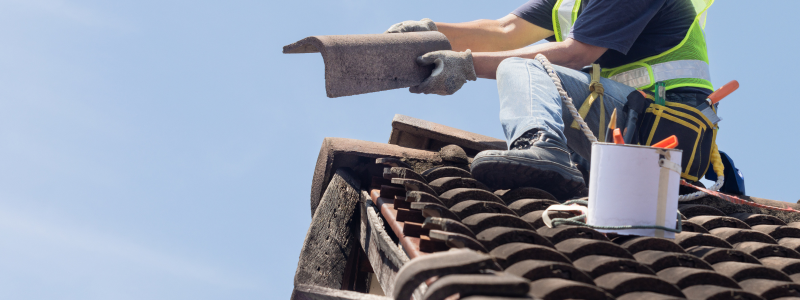
Trust B&M Roofing for Your Roof Replacement Needs
Don’t wait until minor issues become major problems. At B&M Roofing, we’re committed to providing high-quality roof replacements that protect your home or business for years to come. Our experienced team ensures every project is handled with precision and care.
Contact our expert team today to get started with your roofing replacement! We are here to help through every step of the process. Schedule a free roof inspection today and take the first step toward a safer, more reliable roof.
Common Roofing Problems and How to Fix Them
Maintaining a robust and reliable roof is essential for safeguarding your home against the elements. Over time, various issues can compromise the integrity of your roofing system, leading to potential damage and costly repairs. This comprehensive guide explores common roofing problems and provides practical solutions to address them effectively.
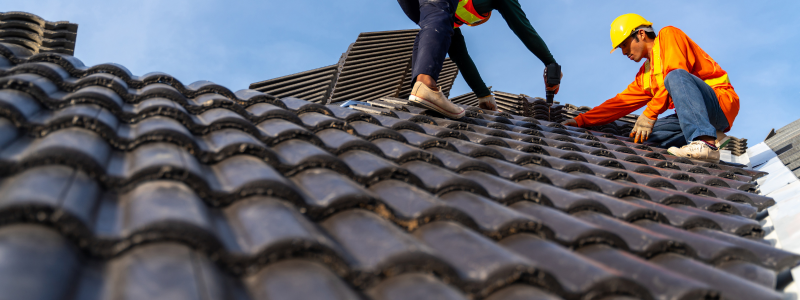
How to Fix Common Roofing Problems
When it comes to roof maintenance, identifying common roofing problems is crucial for protecting your home. Addressing roofing problems quickly after they are discovered is essential to prevent minor issues from escalating into significant repairs. Regular inspections and maintenance are vital to addressing issues before they turn into costly repairs. From leaks to damaged shingles, understanding how to tackle these common roofing problems can save homeowners time and money while ensuring the integrity of their roofs.
By understanding these issues, you can enhance the resilience and longevity of your roof while ensuring a safe and comfortable living environment.
How To Fix Leaky Roofs
Leaky roofs are a prevalent problem for homeowners, compromising a home’s integrity. Damaged shingles typically cause them, cracked flashing, or clogged gutters; harsh weather conditions can exacerbate these vulnerabilities. Telltale signs such as water stains on ceilings, damp walls, or mold growth indicate moisture infiltration, which, if not addressed swiftly, can lead to extensive water damage. To fix a leaky roof, begin by identifying the source of the leak through a thorough inspection. Once the issue is pinpointed, replace any damaged materials and apply an appropriate roofing sealant to seal leaks effectively. For comprehensive repair and peace of mind, it’s wise to consider engaging a professional roofer like us who can provide expert emergency roofing solutions to prevent future leaks and safeguard against severe structural damage.
Damaged or Missing Shingles
Damaged or missing shingles can expose your roof to additional harm, usually from severe weather, aging, or improper installation. Signs of damage include curling, cracking, or noticeable shingle gaps. To maintain your roof’s structural integrity, it’s crucial to address these issues regularly. If you discover any problems, replace individual shingles, ensuring they are correctly aligned and sealed. Regular inspections, particularly after storms, can help you catch these problems early and maintain the protection your roof provides, ultimately preventing more extensive damage.
Clogged or Defective Gutters
Gutters play a vital role in roof drainage, and significant issues can arise when they become clogged with debris like leaves and twigs. Improper installation can also lead to overflow, impacting the roof and your home’s foundation. Signs of clogged gutters include overflowing water, sagging gutters, and pooling water around the foundation. To maintain roof health, it’s essential to regularly clean your gutters to remove debris and ensure adequate water flow, which helps prevent clogs. Installing gutter guards can enhance protection against blockages while ensuring your gutters are sloped correctly, facilitating proper drainage and reducing the risk of water pooling on the roof. Regular maintenance is crucial for ensuring that your gutters function effectively.
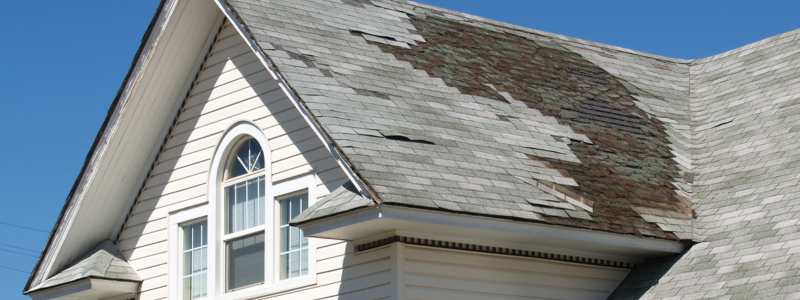
Poor Roof Ventilation
Inadequate roof ventilation can lead to many problems, including accelerated deterioration due to trapped heat and moisture in the attic, resulting in increased energy bills and premature aging. Indicators of poor ventilation include excessive attic moisture and a noticeable rise in energy costs. It is vital to address these ventilation issues by promoting adequate airflow to enhance energy efficiency and improve indoor comfort. This can be achieved by installing additional vents and removing any blockages. Consulting with roofing professionals can assist in designing an optimal ventilation system tailored to your specific roofing needs, ultimately prolonging the life of your roof and improving energy efficiency.
Flashing Failures
Flashing is the critical material that seals joints and prevents water intrusion; improper installation, weathering, and corrosion can compromise effectiveness. Damaged flashing often leads to leaks around structures like chimneys, skylights, and vents, making regular roof inspections essential for identifying these problems early and avoiding further structural damage. If you notice any damaged flashing, it’s crucial to repair or replace it immediately, ensuring proper sealing and installation techniques are used. Regularly inspecting your flashing can identify issues early and prevent water damage.
Ponding Water
Ponding water on your roof, exceptionally flat roofs, can lead to severe consequences due to causes such as improper roof slopes or clogged drains that hinder adequate water drainage. Standing water after rainfall is a significant indicator of this issue, making it essential to address drainage problems promptly to prevent long-term damage and maintain your roof’s integrity. To improve roof drainage, consider adding tapered insulation or installing additional drains, and ensure regular maintenance of these drains to keep them unclogged and avoid water accumulation.
Shrinkage of Roofing Materials
Aging roofing materials can shrink, leading to cracks, tears, and ridges in the roof membrane, jeopardizing the roof’s ability to prevent waterproofing. If you notice visible cracks or tears, it’s essential to conduct regular maintenance to catch these issues before they worsen, ensuring your roof remains a stable barrier against the elements. Roof shrinkage can compromise your roof’s integrity, so promptly inspecting any affected areas is vital. In cases of extensive damage, you may need to replace parts of the roof to restore its structure, and engaging a professional can ensure a thorough assessment and proper repair solutions.
Tree Damage
Overhanging tree branches and falling limbs can cause significant damage to your roof, damage puncturing shingles, and create potential leaks, making it essential to inspect trees near your home to mitigate this risk regularly. Signs of tree damage include visible punctures in shingles and debris accumulation on the roof. Maintaining a safe distance between trees and your roof and regularly trimming overhanging branches can prevent many tree-related roofing issues. Consistent maintenance of surrounding vegetation helps guard against physical damage and ensures the longevity and effectiveness of your roof, safeguarding your home for years to come.
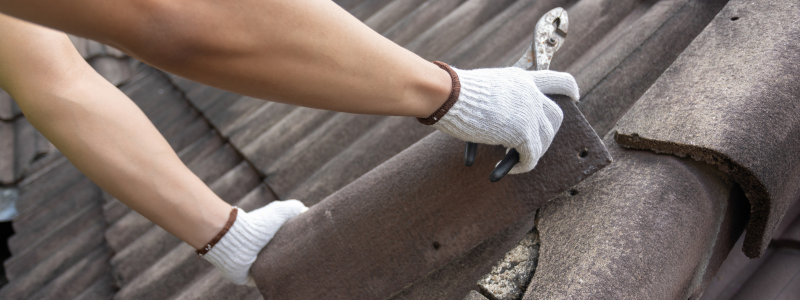
Why Choose B&M Roofing for Your Roofing Needs?
Regarding your roofing needs, choosing B&M Roofing means selecting a company with a proven track record of quality craftsmanship and customer satisfaction. With a team of experienced professionals, B&M Roofing utilizes only the best materials to ensure your roof is durable and built to last. Their commitment to timely and efficient service helps minimize disruptions to your daily life while providing reliable solutions for roofing issues. Additionally, B&M Roofing offers comprehensive warranties, giving you peace of mind knowing that your investment is protected for years to come.
Expertise and Experience
B&M Roofing has been providing high-quality roofing services since 1947. Our team has decades of expertise in identifying and resolving roofing issues, ensuring your home remains protected. We pride ourselves on using the finest materials and the latest techniques to deliver lasting results that enhance the value and safety of your property. Check out our portfolios of previous roofing work.
Comprehensive Services
Whether you need routine maintenance, minor repairs, or a complete roof replacement, B&M Roofing offers tailored roofing solutions. Our experienced team is dedicated to ensuring your roofing needs are met with the highest standards of quality and craftsmanship. We understand each project is unique, so we work closely with our clients to develop custom plans that fit their specific requirements and budget. We offer a range of roofing services to meet the needs of both residential and commercial properties, ensuring robust solutions for every type of building.
Customer-Centric Approach
At B&M Roofing, customer satisfaction is our top priority. We work closely with homeowners to provide reliable and transparent services and keep their roofs in optimal condition. Our team is dedicated to addressing concerns and ensuring each project is completed to the highest standards.
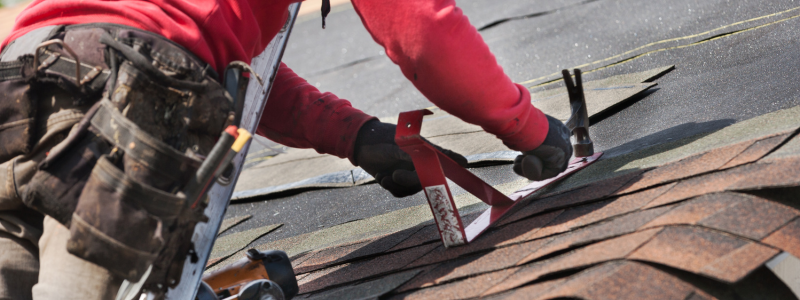
Get Started With B&M Roofing Services Today
Your roof is one of the most critical components of your home, protecting it from weather elements and maintaining its structural integrity. Awareness of common roofing problems and addressing them promptly can save you from costly repairs and ensure your home remains safe and secure.
Trust B&M Roofing to provide expert guidance, thorough inspections, and top-quality repair services. Contact us today to schedule an inspection and keep your roof in its best condition for years.
How to Hire a Roofing Contractor
When it comes to your roof, hiring the right contractor is crucial. Your roof is one of the most essential parts of your home, protecting you from the elements and ensuring your home’s structural integrity. But how do you choose the right professional for the job? This guide will walk you through how to hire a roofing contractor, ensuring you find a reliable, experienced, and trustworthy expert to handle your roofing needs.
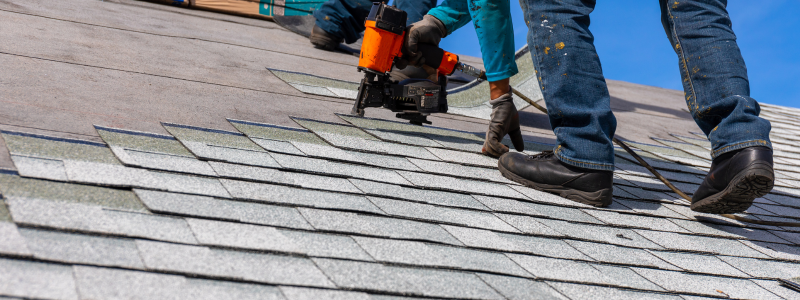
The Importance of Hiring a Licensed Roofing Contractor
Before diving into the hiring process, it’s essential to understand the significance of working with a licensed roofing contractor. A licensed contractor has met state training, experience, and safety standards requirements. This licensing ensures you work with someone knowledgeable about the best roofing practices and local building codes.
Why It Matters:
- Safety: A licensed contractor will follow safety protocols, reducing the risk of accidents during the job.
- Quality Assurance: Licensed contractors are more likely to provide high-quality work, protecting your investment.
- Insurance Coverage: In case of any mishaps, their insurance will cover damages or injuries, giving you peace of mind.
Where to Start: Researching Roofing Contractors
The first step in the process of how to hire a roofing contractor is research. Here are some practical ways to find qualified contractors:
- Ask for Referrals: Word-of-mouth recommendations from friends, family, or neighbors can lead you to trustworthy contractors with a proven track record.
- Online Research: To assess the contractor’s reputation, check online reviews and ratings on platforms like Google, Yelp, or the Better Business Bureau (BBB).
- Industry Associations: Utilize professional organizations such as the National Roofing Contractors Association (NRCA), which can connect you with vetted roofing professionals in your area.
These steps will help you create a shortlist of contractors worth considering.
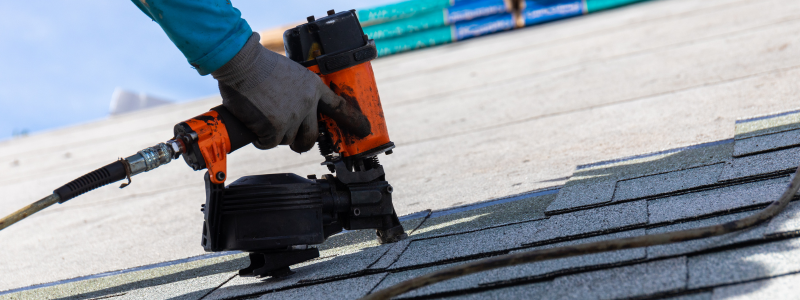
Key Questions to Ask a Roofing Contractor
Once you’ve identified potential contractors, it’s time to ask the right questions to ensure you’re hiring the best roofing contractor for your project. Consider asking:
- Are you licensed and insured?
- How long have you been in business?
- Can you provide references or a portfolio of past work?
- What is your warranty on materials and craftsmanship?
- How do you handle unexpected repairs or additional work?
These questions help gauge the contractor’s experience and reliability. Discussing payment schedules, project timelines, and how the contractor will handle any unexpected complications during the job is also essential.
Verifying Credentials and Experience
After gathering information through your questions, it’s time to verify the contractor’s credentials and experience. Here’s what to look for:
- Licensing and Insurance: Ask for proof of licensing and insurance. This includes general liability insurance and worker’s compensation insurance to protect you in case of any accidents.
- Experience: An experienced roofing contractor will have a solid track record of completed projects. Look for someone with at least 5-10 years of experience in the industry. Our expert team has been helping Colorado residents find the right roof for over 75 years.
- References: Contact previous clients for firsthand feedback on the contractor’s work quality, timeliness, and professionalism.
Verifying these credentials is critical to ensure you’re hiring a contractor who can deliver both skill and accountability.
Warning Signs of an Untrustworthy Contractor
Unfortunately, not all contractors operate with the same level of integrity. To avoid hiring a shady contractor, be on the lookout for these red flags:
- Lack of Proper Licensing or Insurance: If a contractor can’t provide proof of licensing or insurance, steer clear.
- High-Pressure Sales Tactics: Legitimate contractors won’t pressure you into making hasty decisions or demand full payment upfront.
- No References or Portfolio: Reputable contractors will gladly provide references and show off past work.
- Storm Chasers: Be wary of “storm-chasing” contractors who appear uninvited after a storm and offer to repair your roof at a “discount.”
By avoiding these warning signs, you can protect yourself from scams and ensure you hire a reliable roofing professional.
Getting Multiple Bids and Comparing Estimates
When considering how to hire a roofing contractor, one crucial step is obtaining multiple bids from different companies. Here’s why this is important:
- Competitive Pricing: Gathering several estimates ensures you’re not overpaying for your roof repair or replacement.
- Transparency: A detailed bid will break down the costs for labor, materials, permits, and any other fees, helping you understand where your money is going.
- Red Flags: Be wary of bids that are significantly lower than others. Low bids could indicate subpar materials or cutting corners on the job.
Once you have your bids, compare the price and the services included. Look for transparency, professionalism, and an accurate timeline for project completion.
Understanding Roofing Contracts and Warranties
Before signing the dotted line, ensure you thoroughly understand the roofing contract. Here’s what a comprehensive contract should include:
- Scope of Work: A detailed description of what will be done, from the materials used to the areas being repaired or replaced.
- Timeline: Clear start and end dates for the project.
- Payment Schedule: The payment plan includes any deposit required upfront and the amount due upon completion.
- Warranties: Ensure the contractor offers warranties on both materials and craft. A warranty protects against faulty materials or poor installation.
Having a clear, well-documented contract ensures that both parties have a mutual understanding of the expectations and responsibilities.
Finalizing Your Decision
Now that you’ve collected bids, verified credentials, and assessed contracts, it’s time to decide. Here are a few tips:
- Compare Estimates: Look at the overall value offered, not just the price. A higher price may come with better warranties, materials, and experience. Also, make sure the type of roof you are quoted makes sense for your home or business.
- Review the Contractor’s Reputation: Double-check reviews, references, and past projects to ensure consistency in quality and service.
- Make an Informed Choice: Choose the contractor with the best experience, transparency, and reliability.
For a trusted, experienced, and fully licensed roofing contractor, consider B&M Roofing for your next roofing project. Our commitment to quality, safety, and customer satisfaction ensures you’ll have a roof that stands the test of time.

Hiring A Roofing Service Contractor
Hiring a roofing contractor can be manageable. Following the above steps, you can confidently select a qualified professional to handle your roofing project. From verifying credentials to comparing bids and understanding contracts, these best practices will ensure you hire the best roofing contractor for your needs.
Ready to get started? Contact B&M Roofing today for a consultation with our expert team.
Choosing the Right Roof for Your Colorado Home
Choosing the right roof for your Colorado home is a critical decision not only for its appearance but also for its ability to protect your household, increase its energy efficiency, and withstand the unique weather conditions that define the Colorado climate. Colorado’s varied landscapes, ranging from the majestic peaks of the Rocky Mountains to the arid plains of the Eastern Slope, are accompanied by equally varied weather patterns. These weather patterns can range from heavy snowfall and freezing temperatures in the winter to intense sun and occasional hailstorms in the summer.
For homeowners and business owners who may not be familiar with the intricacies of roofing materials and construction, navigating the options can seem daunting. However, the importance of this choice cannot be overstated. The right roof does more than just cover your home; it is critical in its structural integrity, energy efficiency, and overall value.
In this article, we will guide you through the essential considerations and options available to ensure that your property is equipped with a roof that is not only aesthetically pleasing but also durable and suitable for Colorado’s challenging climate. Whether you’re building a new home, replacing an old roof, or simply exploring ways to enhance your property’s resilience, understanding how to choose the right roof is the first step towards securing your investment and ensuring the comfort and safety of those within.
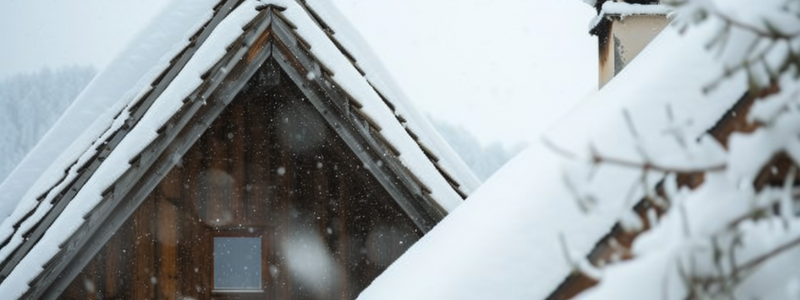
Understanding Colorado’s Climate
When embarking on choosing the right roof for your Colorado home, comprehending the state’s unique climate is paramount. Colorado’s weather is marked by its diversity and extremity, which significantly impacts the selection of roofing materials and designs. Here are the key climate characteristics and their implications for roofing:
- Heavy Snowfall and Freezing Temperatures:
- Winter in Colorado can place a significant weight load on roofs due to heavy snowfall.
- The freeze-thaw cycle can damage roofing materials, as water expands when it freezes after seeping into cracks.
- Intense UV Exposure:
- Summer brings intense sun, which can degrade many roofing materials, reducing their lifespan.
- Sudden Hailstorms:
- Hail can cause immediate and severe damage to roofs not designed to withstand such impacts, leading to leaks and structural problems.
- High Winds:
- Strong gusts can lift or remove roofing materials that are not properly secured or inherently less resistant to wind uplift.
Given these conditions, the choice of roofing material and construction must be made with a thorough understanding of Colorado’s climate. The right roof will:
- Protect your home from the elements.
- Contribute to energy efficiency by maintaining a stable internal temperature, regardless of external weather conditions.
We’re thrilled to help Colorado homeowners make informed roofing decisions by understanding the unique local climate. Our expertise ensures you’ll have materials and designs that can withstand any weather challenge.
Types of Roofing Materials Suitable for Colorado Homes
Choosing the right roof for your Colorado home involves selecting materials that can withstand the state’s diverse and extreme weather conditions. Here’s a breakdown of the most suitable roofing materials for Colorado homes, along with their benefits and drawbacks:
- Asphalt Shingles:
- Benefits: Cost-effective, widely available, and come in various colors and styles. Good resistance to wind and hail when installed with proper reinforcement.
- Drawbacks: Shorter lifespan compared to other materials and can be prone to damage from extreme temperature fluctuations.
- Metal Roofing:
- Benefits: Exceptionally durable, long lifespan, excellent for snow shedding, and energy-efficient. Resistant to hail damage and high winds.
- Drawbacks: Higher initial cost and requires professional installation for optimal performance.
- Slate Roofing:
- Benefits: Offers a natural look, extremely durable, long lifespan, and fire-resistant. Performs well in heavy snow and hail conditions.
- Drawbacks: Very heavy, requiring additional structural support, and is one of the most expensive roofing options.
- Tile Roofing (Clay or Concrete):
- Benefits: Durable, long lifespan, excellent in high-heat conditions, and offers a unique aesthetic. Good resistance to hail and fire.
- Drawbacks: Heavy like slate and can be expensive. Requires a reinforced roof structure to support the weight.
- Composite Roofing:
- Benefits: Made from a mixture of materials, can mimic the look of wood, slate, or tile. Lightweight, durable, and with a moderate cost. Good resistance to fire, wind, and hail.
- Drawbacks: Lifespan varies with quality, and not all composite materials offer the same level of durability.
When selecting a roofing material for your Colorado home, consider:
- Durability: The material’s ability to withstand heavy snow, hail, and UV exposure.
- Weight: Ensure your home’s structure can support the weight of materials like slate or tile.
- Cost: Factor in both the initial installation cost and the long-term maintenance and replacement costs.
- Aesthetic: Choose a material that complements your home’s architectural style and the surrounding landscape.
Each material offers a unique set of advantages and challenges, making it crucial to weigh these factors carefully. The right choice will balance durability, weight, cost, and aesthetic appeal, ensuring your roof is equipped to protect your home against Colorado’s harsh climate while enhancing its overall value and appearance.
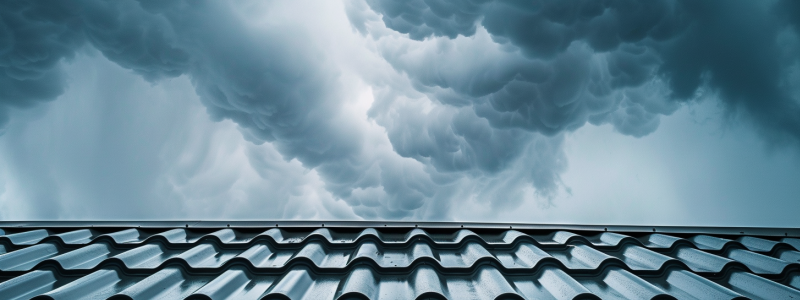
Factors to Consider When Choosing the Right Roof
When selecting the right roof for your Colorado home, several critical factors must be taken into account to ensure that your choice not only meets your aesthetic preferences but also stands up to the state’s challenging weather conditions. Here’s a breakdown of these key considerations:
- Durability and Weather Resistance:
- The material’s ability to withstand Colorado’s heavy snow, hail, high winds, and intense UV exposure is paramount. Opt for materials known for their resilience in these conditions.
- Energy Efficiency:
- Consider how well the roofing material insulates your home and reflects sunlight, contributing to lower heating and cooling costs. Materials that offer better insulation and reflectivity can significantly reduce energy expenses.
- Aesthetic Appeal:
- The roof should complement your home’s architectural style and the surrounding environment. The right material and color can enhance your home’s curb appeal and potentially increase its market value.
- Cost:
- Evaluate both the upfront installation costs and the long-term maintenance and replacement costs. While some materials may have a higher initial cost, their durability and lifespan could offer savings over time.
- Weight:
- Ensure that your home’s structure can support the weight of the chosen material. Heavy materials like slate and tile may require additional structural reinforcement, adding to the project’s cost.
- Local Building Codes and HOA Regulations:
- Be aware of any local building codes or homeowners association (HOA) regulations that may restrict the use of certain roofing materials or colors in your area.
- Sustainability:
- For homeowners concerned with environmental impact, consider roofing materials that are recyclable and have a lower carbon footprint. Some materials also contribute to a cooler roof, reducing the urban heat island effect.
- Maintenance Requirements:
- Understand the maintenance needs of each material. Some require more frequent inspections and repairs to maintain their integrity and appearance over time.
Homeowners and business owners should carefully consider various factors before deciding on a roofing option that balances practicality with personal preference. It’s important to consult with a professional roofing contractor who understands the local climate and building codes to get valuable insights and make an informed decision that best fits your specific needs. Remember, we are here to help you with your roofing needs.
Maintenance and Longevity
The maintenance and longevity of your roof are crucial factors to consider when choosing the right roof for your Colorado home. A well-maintained roof not only extends the life of your investment but also ensures your home remains safe and energy-efficient. Here are key points to understand about maintaining different roofing materials and how they impact the longevity of your roof:
- Regular Inspections:
- Conducting regular inspections, especially after severe weather events, can help identify and address minor issues before they escalate into major problems. It’s recommended to inspect your roof at least twice a year.
- Cleaning and Maintenance:
- Different materials require different levels of maintenance. For instance, asphalt shingles may need periodic cleaning to remove algae or moss, while metal roofs might need checks for rust or corrosion. Tile roofs should be inspected for cracked or broken tiles, and debris should be cleared to prevent water buildup.
- Impact of Colorado’s Climate:
- The longevity of roofing materials in Colorado can be significantly affected by the state’s climate. Materials that are resistant to UV rays, hail, and thermal cycling (the process of expanding and contracting due to temperature changes) tend to have a longer lifespan.
- Expected Lifespan of Materials:
- Asphalt shingles, the most common roofing material, typically last between 15 to 30 years, depending on the quality and maintenance.
- Metal roofs can last 40 to 70 years, with some materials lasting even longer with proper care.
- Slate and tile roofs offer exceptional longevity, often exceeding 100 years, but require a strong structural foundation due to their weight.
- Composite roofing materials have varied lifespans, generally between 30 to 50 years, depending on the quality and maintenance.
- Preventative Measures:
- Taking preventative measures, such as proper insulation and ventilation in your attic, can prevent ice dams and reduce wear on your roof.
- Immediate repair of minor damages, like replacing missing shingles or sealing leaks, can extend the life of your roof.
- Professional Maintenance:
- While homeowners, professional inspections and repairs can perform some maintenance tasks ensure that your roof remains in optimal condition. Professionals can spot potential issues that are not obvious to the untrained eye.
Understanding the maintenance requirements and expected longevity of your chosen roofing material is essential for making an informed decision. A roof that is well-suited to Colorado’s climate and properly maintained can provide decades of protection for your home, making it a wise investment in the long-term safety and efficiency of your property.
Professional Installation and Choosing the Right Contractor
Ensuring professional installation and choosing the right contractor are critical steps in choosing the right roof for your Colorado home. A high-quality roofing material can only perform to its fullest potential when installed correctly. Here are essential tips and considerations for selecting a roofing contractor and ensuring the installation process meets the highest standards:
- Research and Referrals:
- Start by researching local roofing contractors with a solid reputation for quality workmanship. Ask for referrals from friends, family, or neighbors who have had roofing work done recently.
- Check Credentials and Experience:
- Verify the contractor’s credentials, including licensing and insurance. Ensure they have experience with the specific type of roofing material you’re considering. Specialized materials like slate or tile require specific expertise.
- Look at Reviews and Past Work:
- Check online reviews and ask for references to assess the contractor’s track record. If possible, view previous installation projects to gauge the quality of their work.
- Get Multiple Quotes:
- Obtain quotes from several contractors to compare prices, but remember that the lowest bid isn’t always the best. Consider the quality of materials, scope of work, and warranty offered.
- Ask About the Installation Process:
- Discuss the installation process in detail. Understand the timeline, the steps involved, and how the contractor plans to address any potential challenges specific to your property or chosen material.
- Understand the Warranty:
- Ensure you understand the warranty on both the materials and the installation. A reputable contractor will offer a warranty that covers both aspects and clearly explains what is included and any exclusions.
- Communication and Professionalism:
- Choose a contractor who communicates clearly and professionally. They should be willing to answer your questions and provide updates throughout the project.
- Permits and Regulations:
- A professional contractor will handle all necessary permits and ensure that the installation complies with local building codes and regulations, including any specific to Colorado’s climate and environmental conditions.
- Post-Installation Support:
- Inquire about the contractor’s policy for handling any issues that may arise after the installation is complete. Reliable post-installation support is a sign of a reputable contractor.
Selecting the appropriate roofing contractor is just as important as choosing the right roofing material. A competent and experienced contractor guarantees that your roof is installed to the highest standards, providing the best possible protection and durability for your Colorado home. By following these guidelines, you can make an informed decision and have complete peace of mind, knowing that your roofing project is in capable hands.
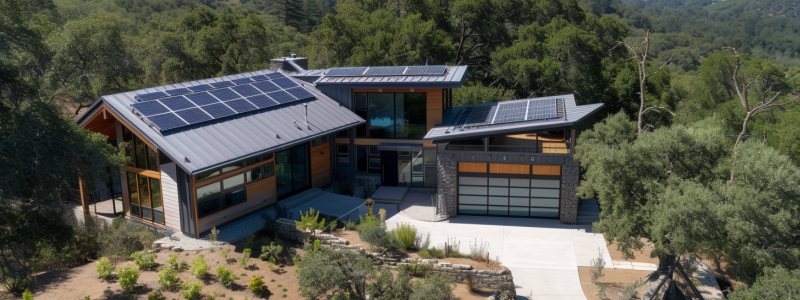
Final Advice
Choosing the right roof for your Colorado home is a multifaceted decision that requires careful consideration of the state’s unique climate, the durability and energy efficiency of various roofing materials, and the importance of professional installation. By understanding the specific challenges posed by Colorado’s weather, from heavy snowfall and hail to intense UV exposure, homeowners can select materials that offer the best protection and longevity for their homes.
The selection process involves balancing factors such as durability, aesthetic appeal, energy efficiency, and cost, while also considering the weight of the materials and local building codes. Materials like asphalt shingles, metal roofing, slate, and tile each have their advantages and maintenance requirements, making it crucial to choose a material that aligns with your needs and preferences.
Professional installation by a reputable contractor like B&M Roofing is paramount to ensure that the roof is installed correctly and performs as expected. Homeowners should conduct thorough research, check credentials, and communicate clearly with potential contractors to ensure the best outcome for their roofing project.
Why us?
We are thrilled to help you find the perfect roof for your Colorado home! Our team understands the importance of balancing style with functionality, which is why we prioritize durability, energy-efficiency, and cost-effectiveness. Our expert approach to selection and installation ensures that your roof will be a wise investment, safeguarding your home and increasing its value for years to come. With our help, you can trust that your roof will not only look great, but also stand up to the toughest weather conditions.
Average Roof Life
Welcome to the world of roofing, where understanding the ‘average roof life’ is not just about numbers—it’s about peace of mind for your home or business in Colorado. The term ‘average roof life’ refers to the typical duration a roof can be expected to last before it needs significant repair or replacement. This is more than just a statistic; it’s a crucial piece of knowledge that safeguards your property against the elements and helps you plan for the future.
Why is knowing about roof lifespan so important? For starters, it’s a key factor in maintaining the safety, aesthetics, and value of your property. A well-maintained roof is like a trusty helmet for your home—it’s the first line of defense against snow, rain, and the bright Colorado sun. Plus, being aware of your roof’s lifespan helps you budget for repairs or replacement, avoiding the sticker shock that can come with sudden roofing emergencies.
In Colorado’s dynamic climate, where the weather can be as unpredictable as a Broncos game, understanding the average life of your roof is particularly vital. It’s not just about enduring the present; it’s about being prepared for the future. So, let’s embark on this journey to uncover the mysteries of roof longevity and ensure that the only thing going over your head is a roof that’s built to last.
Remember, a solid roof overhead is not just a part of your building; it’s the guardian of your peace of mind. And that’s a responsibility we take as seriously as you do.
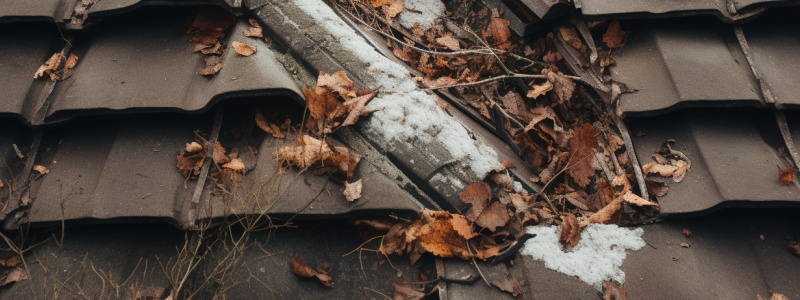
Factors Affecting Roof Life
When it comes to the longevity of your roof, several key factors come into play, especially in a place like Denver or Arvada, where the weather can be as varied as the landscape. Let’s break down these elements:
- Climate: Colorado’s unique climate, characterized by its dry air, high elevation, and sudden temperature shifts, can take a toll on roofing materials. The intense UV exposure at high altitudes can degrade roofing materials more quickly than in other regions.
- Material Quality: The quality of the materials used in your roof is non-negotiable. Higher quality materials may come with a steeper price tag, but they often translate to a longer lifespan for your roof.
- Installation: A roof is only as good as its installation. Properly installed roofs can withstand Denver’s unpredictable weather patterns much better than those that are not.
- Maintenance: Regular maintenance is the key to longevity. This includes inspections, prompt repairs, and cleaning. Neglect can lead to premature aging of your roof.
- Other Factors: These include the roof design, the color of the roofing materials (darker colors absorb more heat), ventilation, and insulation quality.
For Denver homeowners, understanding these factors is crucial. According to a local roofing expert, roofs in Colorado can last between fifteen and thirty years, but this range can vary widely based on the factors mentioned above. It’s a testament to the importance of not just the materials chosen, but also the quality of installation and ongoing maintenance.
Remember, while the initial cost is an important consideration, the longevity and performance of your roof in Denver’s climate are what truly determine its value over time. Investing in quality materials and workmanship now can save you from costly repairs or replacements down the line.
Types of Roofing Materials and Their Lifespan
Choosing the right roofing material is a decision that homeowners in Denver will live with for decades. Each material comes with its own average roof life expectancy, and here’s a comparison to help you weigh your options:
- Composite Asphalt Shingles: These are among the most common roofing materials due to their cost-effectiveness and ease of installation. They can last anywhere from 15 to 40 years, with the lifespan varying based on the quality of the materials and maintenance.
- Architectural Shingles: A step up from the standard asphalt shingle, architectural shingles offer a longer lifespan of 30 to 50 years due to their durability and quality.
- Clay Tiles: Known for their classic aesthetic and durability, clay tiles can last over 50 years. They are excellent for weather resistance, which is a significant consideration in Denver’s climate.
- Metal Roofing: Metal roofs are becoming increasingly popular due to their longevity and resistance to extreme weather. A well-installed metal roof can last 40 to 70 years.
- Slate Roofing: Slate is one of the longest-lasting roofing materials, with a lifespan that can exceed 100 years. It’s a premium choice that offers both durability and timeless beauty.
- Wood Shingles: While offering a natural look, wood shingles have a shorter lifespan of about 20 to 30 years and require more maintenance, especially in areas prone to moisture and wildfire.
For a detailed comparison, some sources offer excellent guides on the best roofing materials for longevity, providing homeowners with a comprehensive look at how different materials stack up against each other.
When selecting roofing materials, consider not only the initial cost but also the long-term benefits. A roof that may cost more upfront could offer significant savings over time due to its extended lifespan and reduced maintenance needs.
The Financial Aspect
Investing in your roof is investing in the future of your home or business. Understanding the cost implications of roof maintenance and replacement is crucial for effective budgeting and financial planning. Here’s what you need to know:
- Maintenance Costs: Regular maintenance is essential for extending the average roof life and can prevent costly repairs down the line. Minor repairs, such as fixing leaks or replacing damaged shingles, can range from $150 to $400 on average. However, neglecting these issues can lead to more significant problems, which are far more expensive to address.
- Replacement Costs: When a roof reaches the end of its average lifespan, replacement becomes necessary. According to Forbes, the cost for roof replacement can vary widely, with averages ranging from $5,700 to $12,500. Factors influencing this cost include the size of the roof, the materials chosen, and the complexity of the installation.
- Long-Term Savings: While the upfront costs of high-quality materials and professional installation may be higher, they can lead to long-term savings by reducing the need for frequent repairs or premature replacement.
- Insurance Considerations: Some insurance policies may cover part of the cost of roof repairs or replacement, especially if the damage is due to a covered event. It’s wise to review your policy and understand what is and isn’t covered.
- Value Increase: A new or well-maintained roof can increase the value of your property. It’s an investment that not only protects your property but also contributes to its market appeal.
Budgeting for roof maintenance and understanding the financial implications of roof repair and replacement are essential for any property owner. By staying proactive with regular inspections and timely repairs, you can manage these costs effectively and ensure your roof remains in top condition for years to come.
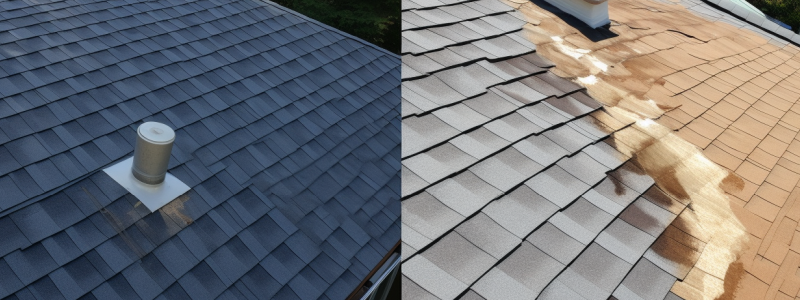
Warning Signs and Maintenance Tips
Your roof is speaking to you, and it pays to listen. Recognizing the warning signs that your roof needs attention can save you from costly repairs or even a full replacement. Here are some signs to watch for and maintenance tips to keep your roof in top shape:
Warning Signs
- Sagging Roof: This is a clear indicator that there’s structural damage that needs immediate attention.
- Water Leaks: If you notice water stains on your ceilings or walls, it’s time to inspect your roof for leaks.
- Damaged Shingles: Look out for shingles that are cracked, buckling, or missing entirely.
- Blocked Gutters: Gutters clogged with shingle granules are a sign of roof wear.
- High Energy Bills: Unexpected increases in your energy bills could be due to poor roof insulation or ventilation.
Maintenance Tips
- Regular Inspections: Conduct or schedule a professional roof inspection at least once a year.
- Clean Your Roof: Remove debris, such as leaves and branches, which can retain moisture and rot your roof.
- Trim Overhanging Branches: This prevents damage from fallen limbs and reduces debris accumulation.
- Ensure Proper Ventilation: Adequate attic ventilation is critical to prevent moisture buildup and heat accumulation.
- Address Repairs Promptly: Don’t delay fixing identified issues; small problems can quickly become big ones.
Always search for valuable tips to extend your roof’s lifespan and ensure it continues to protect your home effectively. Remember, proactive maintenance is the most cost-effective way to manage your roof’s health.
When to Consider Replacement
Deciding when to replace your roof is a significant decision that can impact both the safety and the financial well-being of your home. Here are some considerations to help you determine the right time for a roof replacement:
- Age of the Roof: The average roof life varies by material, but if your asphalt shingle roof is over 20 years old, it might be time to consider a replacement.
- Widespread Damage: If you’re facing extensive damage, such as widespread leaks or numerous missing shingles, a repair might not suffice.
- Sagging: This is a serious sign of structural issues, possibly due to long-term water damage or structural failure.
- Moss and Algae Growth: While some growth can be cleaned, excessive moss or algae can indicate moisture problems that may require a roof replacement.
- Energy Inefficiency: If your energy bills are rising without a clear reason, your roof might be the culprit due to poor insulation or ventilation.
Roof replacement is a considerable investment, and it’s essential to make this decision based on a thorough inspection and consultation with roofing professionals.
Choosing the Right Roofing Service
Selecting the right roofing contractor is as crucial as choosing the best roofing material. Here are some tips to ensure you partner with a professional who will do the job right:
- Research Credentials: Look for contractors with a solid track record, proper licensing, and insurance. This protects you against any mishaps during the roofing process.
- Check References and Reviews: A reputable contractor should have a list of references. Additionally, online reviews can provide insight into their work ethic and customer satisfaction.
- Get Detailed Estimates: A professional roofer should provide a detailed estimate, including the scope of work, the materials to be used, and the timeline for completion.
- Communication is Key: Choose a contractor who communicates clearly and promptly. You want someone who will keep you informed throughout the process.
- Warranty Offers: Ensure the contractor offers a warranty not only on the materials but also on their workmanship.
A good roofing contractor is not just a service provider but a partner in maintaining the integrity and longevity of your roof. Take the time to choose wisely, and you’ll be rewarded with a roof that stands the test of time.
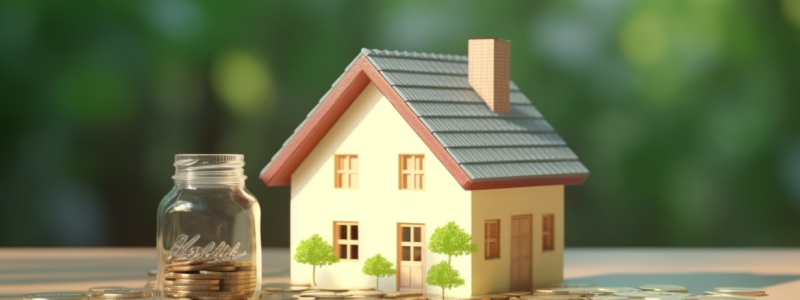
Always Ask the Professionals
As we’ve journeyed through the ins and outs of ‘average roof life,’ it’s clear that the roof over your head is more than just a structural feature—it’s a long-term investment in the safety and security of your Denver property. From understanding the factors that affect roof lifespan to recognizing when it’s time for a replacement, we’ve covered the essential knowledge you need to make informed decisions about your roofing needs.
Here are the key takeaways:
- Knowledge is Power: Knowing the average lifespan of your roofing material and the factors that affect it can help you plan and budget for future maintenance and replacements.
- Maintenance Matters: Regular inspections and upkeep are crucial in extending the life of your roof and preventing minor issues from becoming major expenses.
- Quality Counts: Investing in high-quality materials and professional installation pays off in the long run, potentially saving you money and hassle.
- Professional Partnerships: Choosing the right roofing service is about more than just finding someone to do the job—it’s about finding a partner who will ensure the longevity and durability of your roof.
As you consider the future of your roof, remember that proactive steps taken today can prevent costly repairs tomorrow. Whether you’re scheduling routine maintenance or facing the prospect of a full replacement, approach each decision with the confidence that comes from being well-informed. Take action today by scheduling a professional inspection or consultation with B&M Roofing of Colorado to assess the health of your roof.
